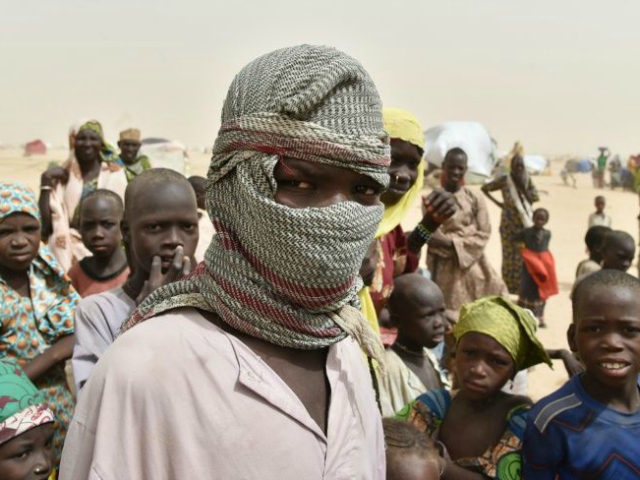Nigeria’s national news agency, NAN, published an interview on Monday with a 15-year-old boy whom the government-run agency says admits to building 500 bombs for the Islamic State affiliate Boko Haram since his abduction at age ten.
Ali Goni is one of thousands of Nigerian children abducted at a young age by Boko Haram. If his claims are true, he is one of an innumerable mass of Nigerian children whom Boko Haram has used as child soldiers, cooks, engineers, and suicide bombers. For much of 2017, Boko Haram appeared to particularly covet the abduction of young girls to use as suicide bombers, as they aroused the least suspicion in public areas that the group likes to target.
According to NAN, military authorities identified Goni as “the most deadly Boko Haram member, who had mastered various techniques that can cause the maximum destruction of lives.” Goni says he specialized in building underwear Improvised Explosive Devices (IEDs) during his time with the terrorist group, and built more than 500 of them.
In the interview, Goni says he was originally from Bama state and was kidnapped and smuggled into the Sambisa forest in northeastern Borno state, the last remaining Boko Haram stronghold in the nation.
“We underwent various training in the camp. During the course of our induction training, I was selected to be trained on bomb-making technique, bomb detection as well as identifying and demobilizing explosives,” Goni reportedly told NAN. “I refused initially, but they said they would kill my mother just like the way they killed my father when they stormed Bama. So I eventually agreed. During the training, many of my colleagues died while trying to make bombs. At the end I emerged the best of all.”
Goni says he survived due to his skill in building bombs and not accidentally detonating them, the cause of death for all those his age whom he knew in captivity.
Police arrested Goni and have placed him in a Boko Haram refugee rehabilitation camp in Maiduguri, the capital of Borno state.
Like Boni, the Nigerian military is working to “de-radicalize” hundreds of Boko Haram terrorists and their victims in rehabilitation camps, many abducted as children and forced to study the Quran and absorb Islamic State propaganda. This week, the Nigerian government announced that 260 people interned at a de-radicalization camp had completed their programs and will soon be fully reintegrated into society.
Boko Haram, whose name roughly translates to “Western education is sin,” initially attracted global attention in 2014 with a string of mass abductions of girls and young women at local Borno schools, in particular, the 276 abductions in Chibok, Borno. By April 2018, the four-year anniversary of the Chibok kidnappings, a UNICEF report found that Boko Haram had kidnapped more than 1,000 children in the past five years.
2017 was an especially deadly year for children abducted by Boko Haram, as the group shifted its focus from village raids to the use of child suicide bombers. Boko Haram used at least 135 children as suicide bombers in 2017, including attacks outside Nigeria in neighboring Cameroon. Some of the suicide bombers used were as young as seven years old.
The jihadist threat facing Nigeria has expanded significantly beyond Boko Haram, as well, including the gruesome attacks by Muslim Fulani herdsmen against Christian farmers, whose land they wish to take to use for their cattle. In June, the global insurer Lloyd’s published a report warning that Nigeria “could lose $437 million, about N157.32 billion, of its Gross Domestic Product, GDP, annually to terrorism, to rank third in the world on forecast GDP loss.”
Violence committed by the Fulani herdsman appears to have reached new heights at the end of June, when the Muslim attacks raided several towns in Plateau state, hacking Christians to death or burning them alive to take their land. An excess of 200 people reportedly lost their lives in the Plateau attacks, leaving the few surviving villagers to take care of the bodies and attempt to rebuild the villages.

COMMENTS
Please let us know if you're having issues with commenting.